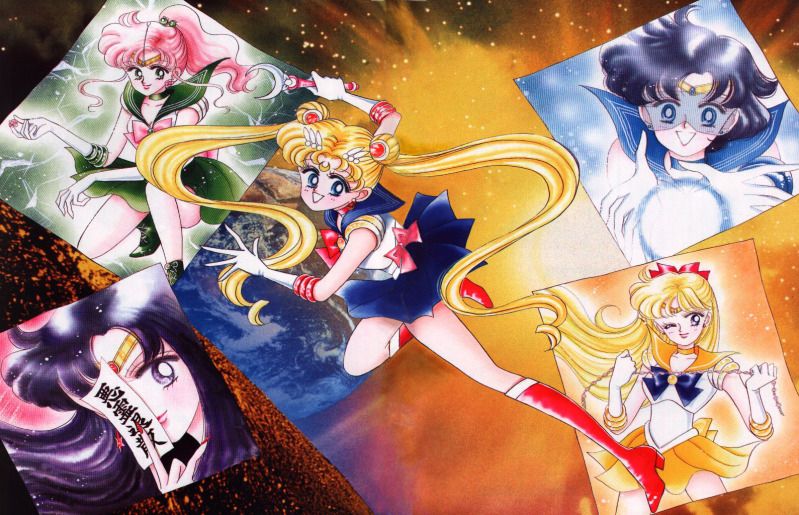Backing Stuff Up: The Great Feminist Manga and Anime List: Sailor Moon
Plot: Fourteen year old Usagi Tsukino is a normal Japanese schoolgirl, though she’s clumsy, impulsive and a bit of a crybaby. Her life changes completely when she meets a talking cat called Luna, who tells her she must fight evil as Sailor Moon and find the princess who she must protect. Though reluctant at first, Usagi fights the newfound enemy, on the way gathering allies in other girls with blessed with the same destiny, encountering a mysterious masked man and learning the truth about herself, her past, her future and her identity and depths of courage she never knew she had.
There are several different mediums and continuities to Sailor Moon and each are worth checking out. I’ll have to introduce them all, and I’ll be outlining the different strengths and/or weakenesses in each one for each category.
The manga is the original, created by Naoko Takeuchi. The strengths of the manga are best illustrated by the words of Takeuchi herself, it is by a woman, for girls and about girls. The plot of the manga is very tight and generally provides more backstory and thematic focus than the anime. The main character herself develops very quickly and consistently, growing as an independent, capable and confident young woman, and is treated as such. Her boyfriend and the character Chibiusa are also given a lot of consistent development, and her boyfriend unflinchingly acts as her support, making his respect for her clear in all of his actions. Usagi’s friends get less story focus compared to other continuities, but more backstory and some clear and positive character development. The bond between the girls is strong. However, the villains are a lot less developed than other continuities, sometimes not lasting more than a single page.
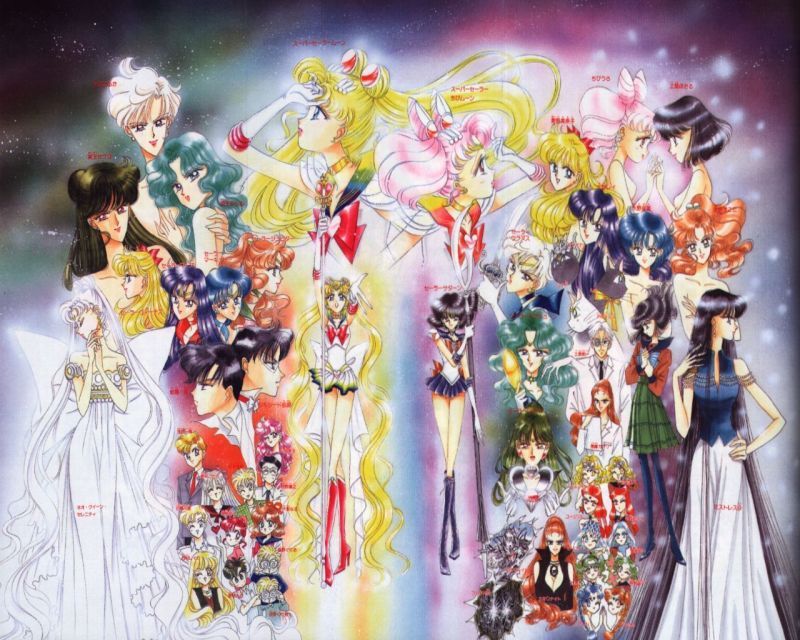
The anime differs wildly from the manga on several plot points, and the plot is generally less tight and consistent than the manga. There’s a lot of filler, however this is also a good thing as it’s generally enjoyable and gives us a lot more time to get to know the non-Usagi girls, see their daily lives and strong bond and see why they are invaluable to the main characters in battle. They get more focus, even though for some of them a large portion of their manga backstory is never explored or even mentioned, which is frustrating. Usagi herself definitely develops and is still a wonderful hero (in my opinion), but it’s a lot slower, shakier and less consistent than the manga. Sometimes she seems to “reset” or they forget what she’s learned for a cheap joke. Chibiusa and Tuxedo Mask also receive some less developed characterization, Mamoru in particular pulls some paternalistic stuff he never does in the manga and his trust and respect for Usagi is less prominent in the character, though they still have sweet moments and still defy gender roles a lot. The villains, on the other hand, receive infinitely more development and screen time. There’s a lot of awesome, moving scenes and character moments that weren’t in the manga, but of course there’s also a lot of great scenes in the manga that didn’t make it in the anime as well. You can definitely feel some “male influence” occasionally, as a lot of the animators were men, which Takeuchi complains about. For instance, all of the girls were significantly more obsessed with boys (barring the ones who only liked girls)! And I feel the show relied on manufactured conflict between characters in a way that was annoying sometimes (see: exaggerating the conflict between the younger Soldiers and older ones, when in the manga the older ones acted more as awesome big sisters after some sensibly resolved conflict) There’s a lot more camp too, but for the most part it’s great camp.
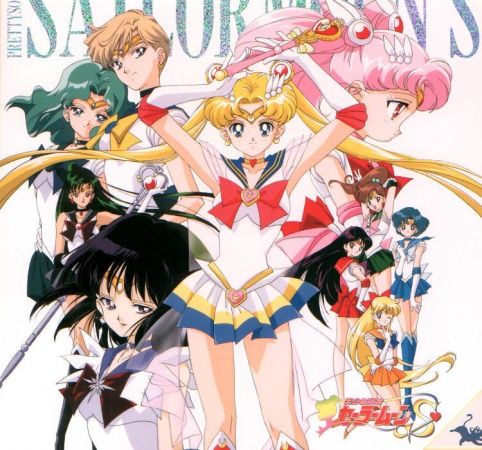
Pretty Guardian Sailor Moon is the live action version. There’s the cheesiness and low budget effects and initial awkwardness, but it really takes off come episode six and gets better as it goes along. The characters have their manga backstory explored wonderfully and are developed consistently with the relationships between them well explored, in much greater depth than other versions. They are treated with respect and the villains are given complexity. However, this only adapts the first arc of the manga, so some beloved characters aren’t present. The plot is well-paced and the villains well developed, though the ending was rushed due to budget/cancellation reasons. There’s also the fact it engages in some cliché “women in power are dangerous” tropes the other series completely averted, though it’s still partially subverted.

Finally, there’s the Sera Myu musicals. There are a TON. I confess I’ve only seen a few, but you can expect a campy mix of anime and manga elements (mostly anime) doing their own thing, which characters abound and some pretty cool songs. The feminist bent remains intact.
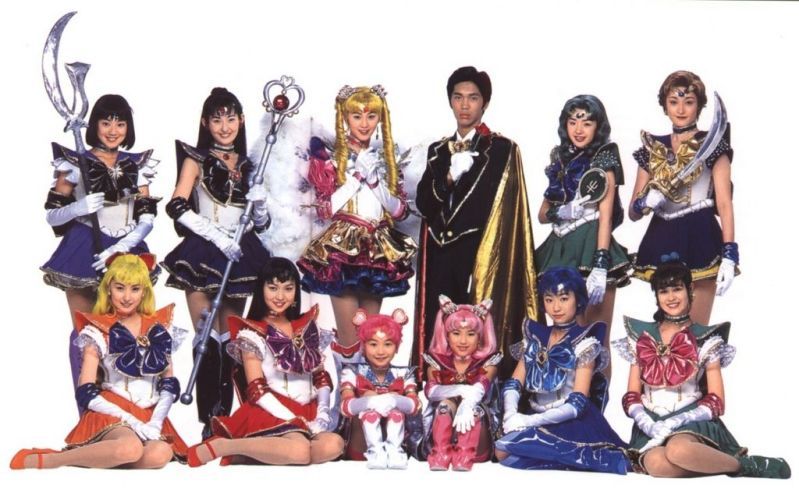
I’d ask the viewer/reader to consider the original context of Sailor Moon too. This was the trope codifier for the Magical Girl Warrior genre. It had a lot of imitators and even basically really launched that genre. A lot of things you might find cliché basically originated with this franchise. Consider all the woman-positive and queer-postive stuff in this show and then remember it was the early nineties. This story broke a LOT of barriers, some that media still struggles with (example: positive portrayal of lesbians and other non-binary people, women not being ultimately punished for their power) pretty hard twenty years later. It’s enjoyable and feminist even if you don’t consider the context at all, but context helps you fully appreciate that!
Women and Gender:
Sailor Moon is a series that is unquestionably focused on the growth and power of young women and strength of the bonds between them.
The very premise of it is that women shape the fate of the universe. They are what holds the universe together and are its last and first line of defense. Every single planet and star and satellite has a woman who represents it (A Sailor Senshi/Soldier), who rules it and protects and fights for it, who controls its very fate. You’re going to be hard pressed to find any other story that says women are important, women are essential; women are powerful on such a complete and cosmic scale. What’s more, the mythology of Sailor Moon is that things are pretty fantastic when women are in power- women can be the best rulers and protectors if they put their mind to it. The Queen of the Moon used to protect us all and it was pretty sweet. In the future, women will be in power again and it will also be pretty awesome. Sailor Moon verges on feminist utopian fantasy, unflinchingly saying that girls are good enough to run the world.
Another obvious premise of Sailor Moon is female legacy and community. Sailor Moon’s power is never going to die, and it will be passed on from woman to woman from generation to generation. Sailor Moon inherited her power from a powerful woman in the past and the series makes it clear she’s going to pass it on to her daughter and the a new generation will also take on the roles of the Senshi. There will always be powerful women, and these women have the support and legacy of powerful women from the past to stand on and to carry on proudly. These girls don’t just save the world, they end up running it, and they change it in a real, positive and permanent way.
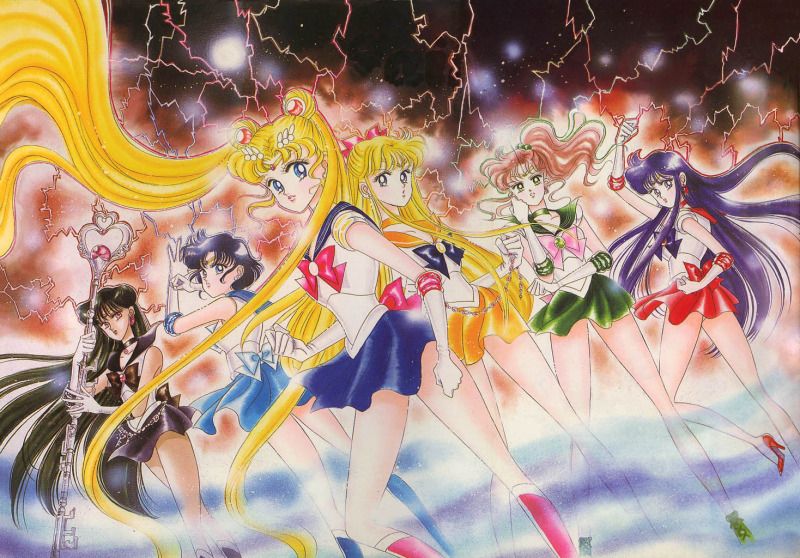
This is a narrative where far from being punished for their power, it is because of their power that these young women find their community and place in the world. Usagi states in the last arc of the manga that even though being Sailor Moon is painful sometimes, she is ultimately glad for this power and identity because if she wasn’t Sailor Moon, she would not have met her loved ones and found her place among them. Hell, she might not even exist. Sailor Moon as a story is all about women looking up to and loving other women. The main character is the type of person who, upon finding another woman far more talented than her and even somewhat intimidating, rather than resenting those talents, will look up to the other woman and adores her for her strengths. Because of this, the girls she befriends find acceptance and confidence in their identities that they were unable to find anywhere else. They form a community that supports each other. One girl is able to break the cycle of her abuse and find hope specifically because of the acceptace she finds in her girl friend.
Sailor Moon also shows the very gender-specific social pressures and barriers these girls face in day-to-day life and why that acceptance is so important, and shows the girls defying the narrow gender roles forced on them. Ami is socially isolated and resented because she’s intelligent and doesn’t hide it, but her friends all support and encourage her (and seek academic help from her) and her bright nature is exactly why she’s a Senshi. Makoto is ostracized for her tall stature and physical strength that she isn’t afraid to take advantage of to chase down bullies. She doesn’t fit the gender binary because she also loves to cook, clean and garden and desires a family while being a tough fighter. But her friends embrace both sides of her, and in the manga, she flat out admits she was romantically rejected but being a soldier showed her there were things more important than that, that her friends have taught her the true meaning of love and are the most important thing to her and have given her a purpose. In the anime, it’s shown several times that even when men reject her, she has the support of her friends to fall back on and she looks up to the older woman Haruka for showing confidence in her own non-binary identity.
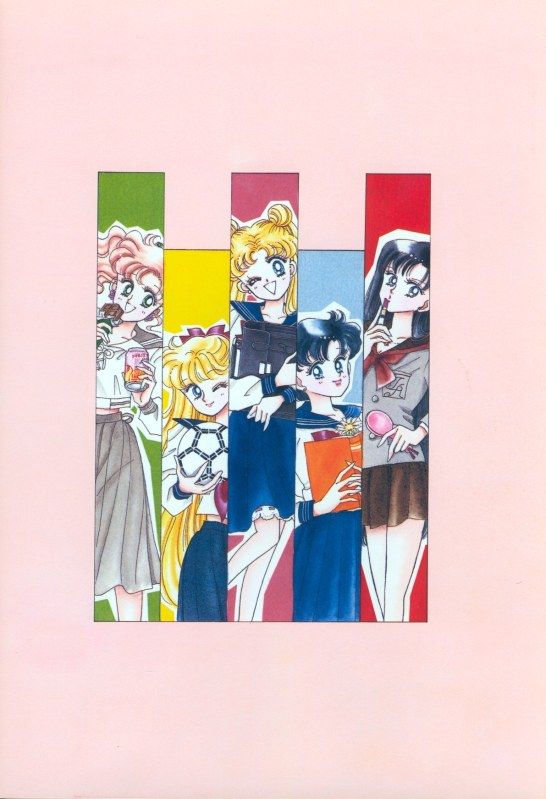
In the manga, Rei (also isolated before she met Usagi because of her “weird powers, as women with mystical powers are often feared- her friends help her open up) struggles with the fact that she does not want to be in relationships with men the way girls are expected to be, but the narrative ultimately shows her that her choice is just fine. Minako also rejects such standards together with her- “We don’t need men. Got a problem with that?” Ultimately, they are happy with their choices because they value their bond with the other Senshi so highly. Haruka specifically doesn’t care about the gender binary- she wears mens clothes (all the time in the anime, sometimes in the manga) and in the manga states directly that gender doesn’t matter to her and she feels that sex should never limit a person either. She’s always portrayed as confident and comfortable with herself, and is admired for it. The Starlights are also folks with boobs and vaginas who present outside the gender binary and are confident in that.
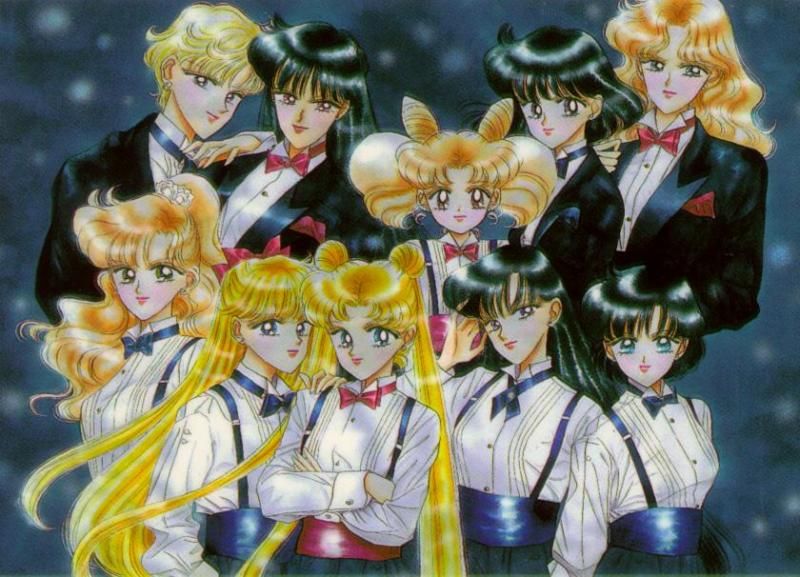
Another important theme in Sailor Moon is that femininity can be a source ofpower. Sailor Moon specifically fights evil in a very feminine way- with the light of her love and the strength of her emotion. And it is badass and major and epic. The weapons are always very feminine as well- crystals, heart shaped stuff, tiaras- but they are unquestionably powerful and never taken lightly. Sailor Moon melts the flesh off monsters with her strong emotional soul that would relegate her to the token weepy love interest girl standing on the sidelines in most male-driven stories. Her kind heart, compassion and emotional intuition isn’t a sign of her uselessness, but the key to saving the world. Her tears send out sonic waves. When she transforms into the short skirt and highheels, getting on makeup and nail polish and all that bling- it’s because she’s ready to take you down. She fights crime in a girls school uniform and she’s proud of it- in the anime, a villain once tries to embarrass her over her state of dress and she makes it clear it never occurred to her to even be embarrassed, and she refuses to be. She doesn’t need to reject or be ashamed of her femininity to be a hero. She also very literally uses the strength and community she has with other women to give her the power to win.

Even aside from general themes, Sailor Moon has a few specific instances where it even directly takes on sexism and the gender binary-They kick a villains ass verbally and physically when he tries to take advantage of women and makes misogynistic comments in the anime and PGSM (The immortal lines “scorning women is positively feudalistic! Down with sexual discrimination!”), In the manga, they discount the idea that girls should be expected to be weaker in battle All continuities have the girls completely owning men who can’t handle that a girl beat them in a dirtbike race, sports, or at video games. These messages were all pretty important considering the context of when and where the story was made, even if sometimes on the nose.
There’s also the gender dynamics of the main heterosexual relationship, which it wonderful in how subversive it is. Mamoru fulfills the supportive and often-imperiled love interest role the girl is often stuck in for the main character. Heknows that Sailor Moon is more powerful than he is, and he doesn’t find it shameful. His only insecurity about it is being worried about holding her back. In the manga (and couple times in the anime), Mamoru constantly admires how strong Usagi is, believes in her invincibility and will do anything to support her. Here’s a quote of his to Usagi from the manga that demonstrates how they work:
I believe in you. Many live and souls have been saved with that power. You must believe in yourself, follow your path without fear. When you’re uncertain or worried, I’ll be there for you. I may have no power, but you called me here to you. If you need me…I’ll give you the strength of my soul. I live to be there for you, so you must fight with confidence.
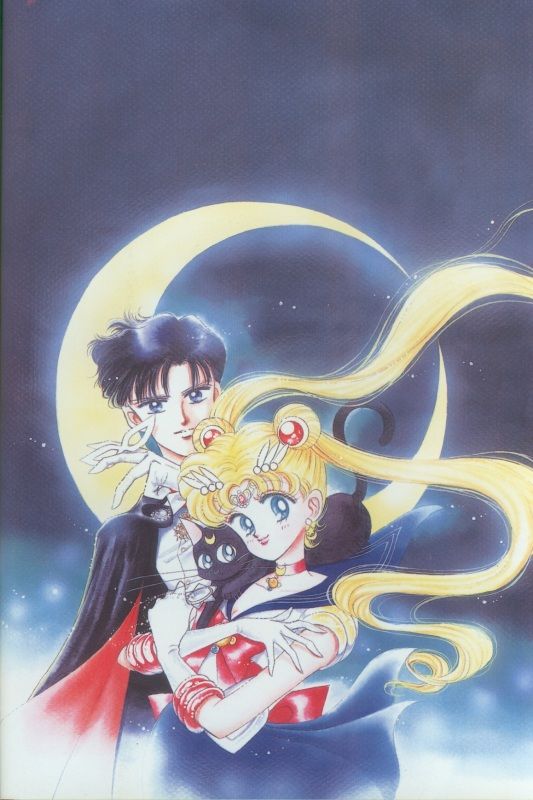
But they’re a partnership, and Usagi depends on his support and makes it clear how much she values him. Ultimately she really loves him for being a genuinely kind and brave person.Again, he’s more paternalistic on occasion and less constant with his respect/open with his feelings in the anime, but their dynamic says screw you to gender roles in basically every continuity. For once, it’s the guy who gets kidnapped/killed/brainwashed and needs his girlfriend to rescue him!
He’s also a dude who unabashedly loves children- in fact, it’s made clear in the manga that he will give his all to take care and protect their future child becausehe wants Usagi to be free to do what she has to do and knows Usagi has others who protect her and can take care of herself. Basically, it’s heavily implied he’s the one who will probably take on the bulk of the child rearing in the way the woman is traditionally expected to do. Did we mention said daughter will take Usagi’s last name?
Ultimately, all these themes add up to Sailor Moon being a coming-of-age story- but the rare one that shows the growth of powerful young women emerging into adulthood. There’s a huge emphasis on mother daughter legacies and accepting oneself. In addition, the story covers themes such as ways in which love can be nurturing or destructive, the importance of duty, the dynamics of sexual assault, parental responsibility and partnership, growing sexuality, growing up too fast, moral relativism and moral conflict, breaking free of abusive cycles and constant state of war and death and rebirth. There’s a modern myth aspect to this series that draws heavily on mythology, but this myth? It’s shaped by women and it’s about the power of women.
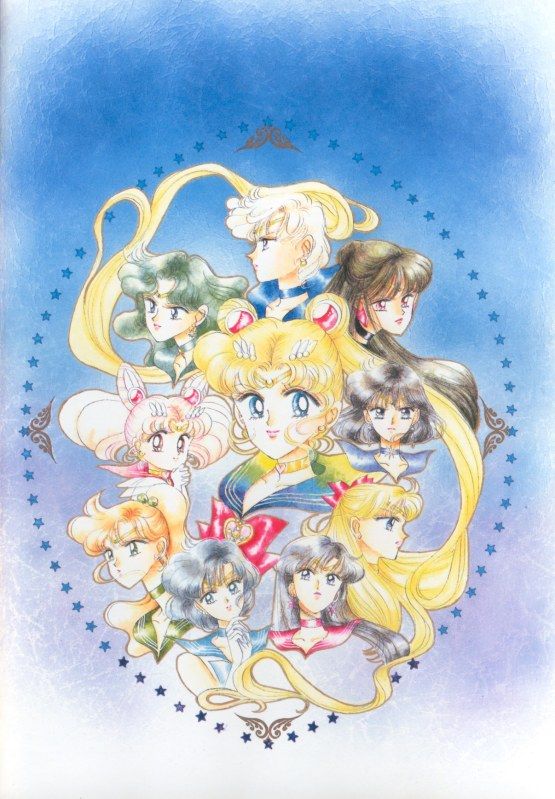
Race and Culture: The whole franchise is very Japan-centric so there’s not much in the way of other cultures. However, there are a few instances of positive representation of some other races, one being a major character. Sailor Pluto is consistently darker-skinned than the other characters, (in the anime, her skin tone can vary from a shade or two darker to noticeably and significantly so, but in the manga it’s always apparent). According to Naoko Takeuchi, this is because she’s half-Romani. Obviously, she’s a hero and how rare is it to find a positive, non-stereotyped example of a Romani character in media? I just wish that aspect of her could have been touched on in canon!
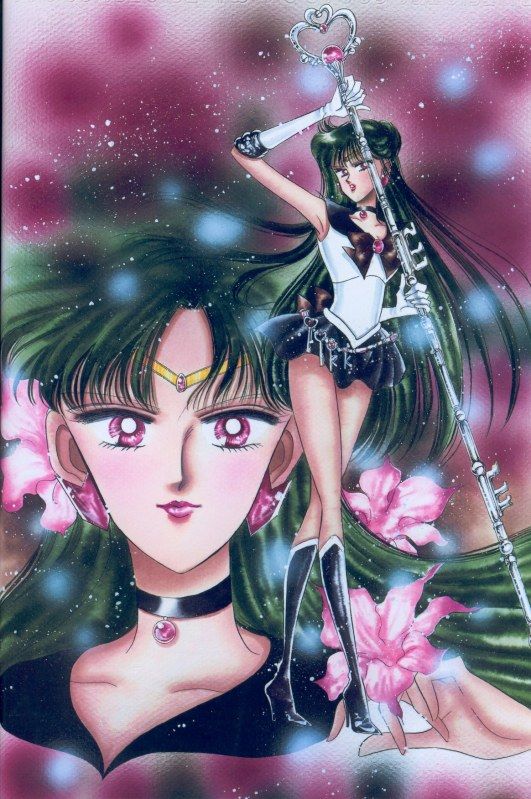
In addition, Kunzite has darker skin and in the manga is “in charge of the Middle East” and it’s hinted this was where he precided thousand years ago, so it’s possible he’s supposed to be Middle Eastern. In PGSM he’s played by a Japanese man though.
There’s also a side-character in one of the episodes of the S Season of the anime who is very dark-skinned- judging from her name (Elsa Gray) she’s probably meant to be either African-American or African-European. She was shown to be talented at running (enough that she initially dodged the monster attacking her) and the other girls admired her. She was also more significant than your average side character as she introduced Haruka and Michiru, THUS DESTINY WAS MADE. She was also hinted to be queer. There’s actually a really neat little doujinishi starring her, check it out!
LGBTQ: Sailor Moon is a franchise wonderfully full of queer stuff. Haruka and Michiru are one of the most famous lesbian couples in anime. Badass lesbian superheroes in a happy and stable relationship!
What’s more, Haruka and Michiru are specifically shown to be both desirable and admired in the context of the show. All of the younger girls look up to them and often express attraction for them, commenting on their beauty and coolness. In the manga, they are specifically presented as big sister figures and mentors for the other Senshi and missed when they’re gone. In both the anime and manga, Makoto expresses a desire to be “strong like Haruka” when she grows up (in the manga she also wants to be “beautiful like Michiru, though that’s a secret” awww)

How blatant their relationship is depends on the continuity- they will hold hands, nuzzle each other, flirt heavily, go everywhere together, talk about how the other is in bed, Haruka will hit on girls etc. But a kiss is never shown in the anime nor is it outright stated (though it practically is in their flashback episode) In the manga, Naoko Takeuchi states that Haruka and Michiru are a lesbian couple in a sidebar included with the story, so there’s no room for doubt. Also, Haruka kisses another girl (not Michiru though oddly) and states gender doesn’t matter to her. Michiru also mentions Haruka has what she considers to be “male and female personality traits”, so she could very easily be read as genderqueer. We finally see the couple kiss in Sera Myu, during a curtain call- bless those actresses!
What’s more, along with another woman, this lesbian couple adopts a child and raises her well. It’s basically a wonderful queer family and not treated as unusual.
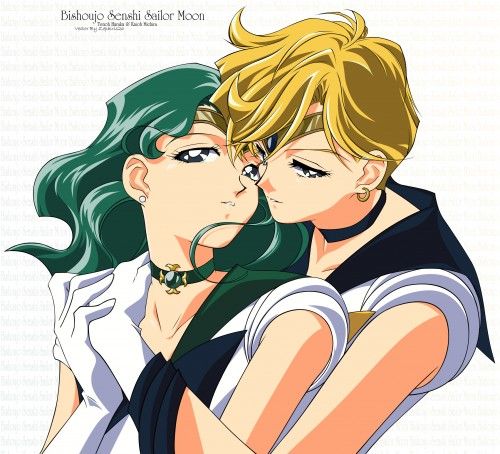
There’s also the Starlights for more queer Senshi. How they are presented in the manga and anime is very different. In the manga, they always have boobs and vaginas, but they dress as men and present themselves as such when not in uniform. No “justification” or “explanation” is given for this. Seiya is attracted to women, and even kisses one. These characters could obviously very easily be read as trans*, particularly Seiya.. Trans* or not, Seiya is definitely queer.
The anime- facing some heat even in Japan for Haruka and Michiru- had the Starlights actually switch sexes upon transforming- as in, they were physically male in civilian clothes and female when fighting. This was presumably to make Seiya’s crush on a woman “look” traditionally heterosexual, even if it really wasn’t. Careful viewing was required to get that the original sex was female, Naoko Takeuchi herself was actually under the impression they had been made to be guys who were only girls to fight, and voiced her displeasure. Seiya gives a “blink and you’ll miss it” explanation of how the “male form” is a disguise to further the group’s goals. Obviously, this would still make Seiya at least queer and possibly trans* as ze seems more comfortable in “male form” than the others, but it’s a shame it had to be covered with a smokescreen.
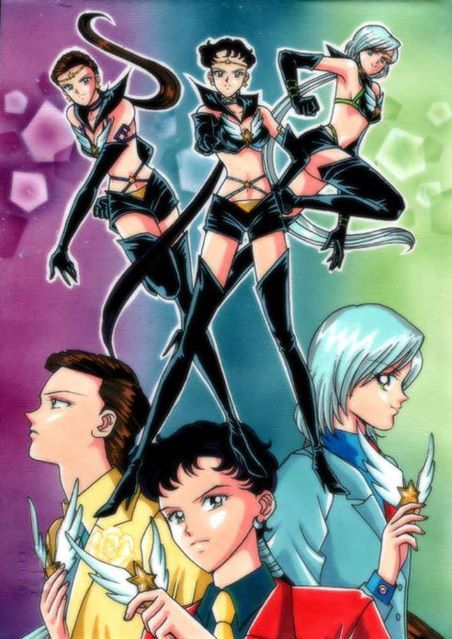
In the manga, the main character herself is involved in two on-panel girl-on-girl kisses, and expresses attraction for Haruka (she does in the anime too- again, all the girls do).
In the anime, some villains are gay too- interestingly, Kunzite and Zoisite’s relationship with each other is presented as the only redeeming thing about them and the only thing that’s supposed to really emotionally connect to the audience, rather than accentuating their badness.
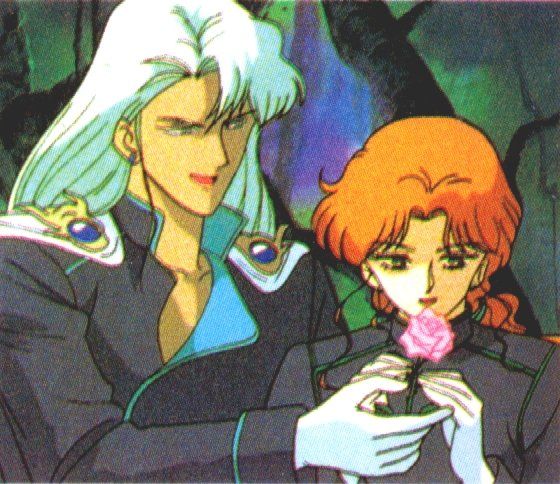
Then there’s Fish-Eye, who may identify as either bi-gendered, genderqueer or trans* as ze dresses and presents zirself as a woman quite often and goes after men, (Doesn’t seem to mind being called “he” though). However, the “evil crossdresser” trope is actually sort of subverted, as Fish-Eye is the first of zir group to question what the morality of their actions and receives a lot of character development and attention. Takeuchi stated the entire Amazon Trio was meant to give off a transvestite style vibe, and Hawks-Eye is the one to crossdress in the manga- however the Trio is barely characterized and thoroughly evil in the manga, like most of the villains.
Disability: The closest the series has is Hotaru Tomoe’s state of being. She’s a sickly person prone to uncontrollable and painful fits and she can’t exert herself athletically at all. In the manga, her disability is physically visible, though usually hidden (and aided with some futurist tech). There’s some good commentary on the experience of people with disabilities in both continuities- like her friends running away and the realization Hotaru isn’t a different person now because of how she looks. In the anime, there’s an episode where Hotaru idolizes an athlete precisely because he was disabled like she was when he was younger, but was able to overcome it. She has similar hopes for herself. Supernatural causes eventually interfere with said disabilities though, as they were supernatuarally created.
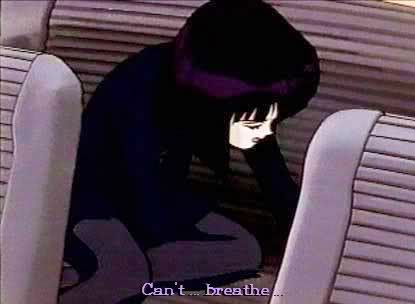
Weight: Unfortunately, there’s no body type variance in this series. They’re all impossibly thin and also busty. What’s more, the series can be blatantly fatphobic. In the manga, this is mostly limited to the sidestories- Makoto nearly dies at the thought of being a “fat Sailor Soldier”, Chibiusa mocks a villainous woman for her “fat piggy legs” (however, it is shown that the insult is hurtful, the woman’s size was just part of her aging and a source of insecurity for her, but she is actually loved regardless of how it looks. So a little bit of positive in the negative there, but still icky). There’s also a short chubby guy in one side story who’s a hero! He calls himself “Tubby Mask” tho apparently based on some person who looked like and wanted to be called that?
Apparently Naoko Takeuchi meant for Usagi to be “short and chubby” but she’s drawn the opposite. It makes it incredibly awkward in the anime when she’s accused of gaining weight- she’s a SIZE ZERO. A lot of “you gained weight”, “you’ll get fat” comments are thrown around in the anime, mostly in the first season and SuperS- though in both continuities Usagi does pretty much rebel against the whole “girls shouldn’t show enthusiasm for eating/eat a lot thing” her society sometimes criticizes her for.
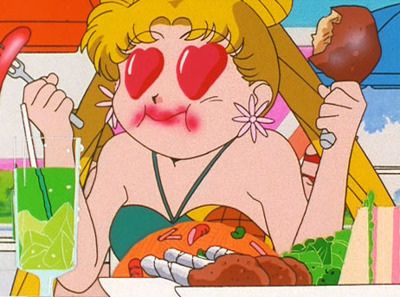
Episode 5 of the anime in particular was devoted to “getting fat” and it’s very awkward, though it’s actually a lot better about stuff than the Sailor V manga story which has a similar premise (we’ll get to that when we review that series). Though seeing the girls diet obsessively is sad (and ridic because SIZE ZERO), and both Mamoru and Luna make really gross comments, Motoki at least says he doesn’t find chubby girls unattractive and actually likes them and encourages Usagi not to starve herself. The ultimate moral of the episode is as Usagi said, “don’t go on any weird diets”. However, the way the issue was treated, particularly how the girls are dismissive of the worries of Usagi’s only legit chubby friend, not bothering to examine why this girl is made to feel bad about herself.
Obviously this issue is deeply entrenched in a culture I can never completely understand, and in some cases clearly Takeuchi’s own personal phobias. But yeah, it’s pretty bad.
For the record, PGSM doesn’t have any blatant fatphobia, don’t know about Myu.
Triggers/Not-so-great things: Trigger warning for sexual assault of the force kiss variety in Sailor Moon R-attempted in the anime, succeeded in the manga. The manga’s handling of the incident and her assailant is ultimately more in line with the feminist themes of the series though. See more on that here and here.
Aforementioned fatphobia and lack of body type variance of course, there’s also a lot of male gaze, especially in the anime (it’s hard to accuse the manga since it drawn by a woman, but Takeuchi showed she was aware of her periphery demographic). The costumes aren’t very practical (but this is more due to Takeuchi’s love of fashion), in the anime, there’s the infamous transformation sequences, some panty shots (though in uniform it’s more “leotard under skirt” shots), the legs are super elongated, the busts are big etc. It’s a bit less prevalent and more graceful in the manga with more dudely fanservice to balance (mostly Mamoru provides it- he’s shirtless a few times and goes transparent and naked to transform once! EQUALITY!) . Usagi sometimes gets naked in battle (it makes sense in context) but in Japan, nudity can mean purity rather than be a sex thing and that’s probably the case, as she’s rarely sexualized during those times. In my opinion, even in the anime it never gets really gross- the girls are always powerful, never contorted in back breaking poses or helpless and sexualized- but then I come from reading superhero comics, so my standards may be low.
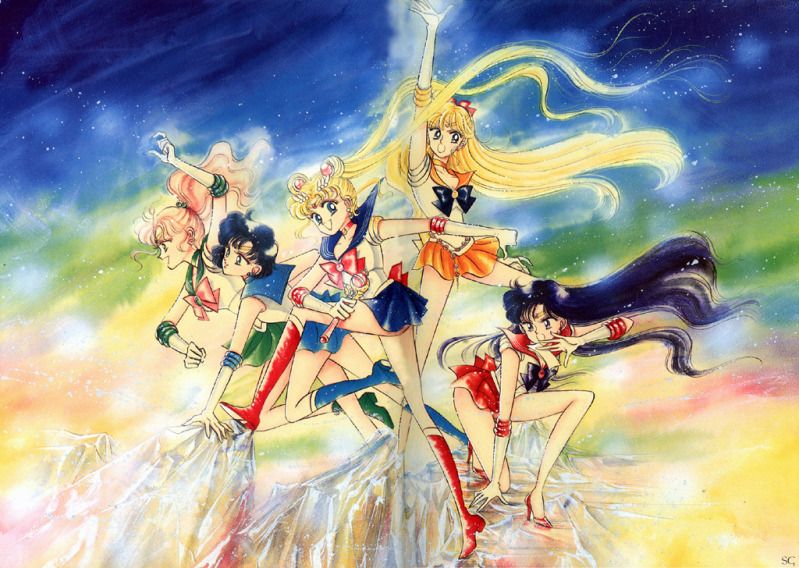
The girls internalize some misogyny and heterosexism, mostly in the anime- there’s one episode in S where the younger girls say a lot of heterosexist things though it’s pretty clear we’re supposed to find them silly (and Rei’s hinted to be vehement because of her own…interests). After that, there’s the occasional weird comment, but nothing major. But immensely frustrating is when Usagi and Mamoru’s relationship is handled a lot less wonderfully than the manga- sometimes the other girls pressure Usagi to “improve” for Mamoru and there’s a far too long arc in R where Mamoru broke up with Usagi “for her own good/to protect her (but let’s not tell her that she doesn’t deserve to know!)” and am I ever unimpressed with that overplayed paternalistic patronizing bullshit.
Oh, as far as consent issues go, Mamoru kisses Usagi when she’s semiconcious (both anime and manga)- in the manga only rare gender reversals are pulled, with girls kissing guys awake. Sleeping Beauty is definitely the inspiration for this fairly common trope , even directly mentioned by NAME as such in one instance of the anime. So the West has itself to blame for this I guess :/.
Thaaat’s about it! On a less serious note, the anime can get kind of repetitive and expect a lot of stock footage.
Awesome Things: I think I covered all the awesome gender stuff, but seriously, this is a franchise created by a woman, for girls, about girls and it’s sad how rare that is. It broke a lot of barriers and inspired a lot- more than that, it’s a genuinely heartwarming and often REALLY funny superhero narrative with a lot of different types of characters and relationships and development. The anime especially is cheesy and campy a lot, but as someone who appreciates cheese and camp, it’s the GOOD kind. This has been around twenty years and it still holds up to a cynical young adult feminist laday like me as something cool and enjoyable and worth writing friggin’ novels about.
